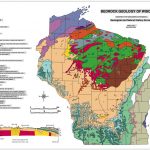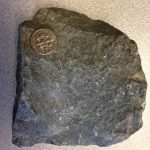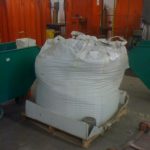Lavas in nature can have a wide range of compositions that contribute to the diverse behavior and volcanic landforms that occur in nature. Although the Lava Project has experimented with a number of different lava compositions, nearly all of our lava flows are composed of basalt, by far the most common lava type on Earth. The starting material for nearly all of our lava flows is ancient basalt (~1.2 Billion years old) from lava flows that were erupted in the Mid-Continent Rift. Our preferred material comes from the Dresser Trap Rock Quarry in Polk Co., Wisconsin. It comes from the Chengwatana Formation, part of the regionally extensive Keweenawan Basalts (For more information see: Wirth, K.R., J.D. Vervoort, and Z.J. Naiman, The Chengwatana Volcanics, Wisconsin and Minnesota: Petrogenesis of the southernmost volcanic rocks exposed in the Midcontinent Rift, Can. J. Earth Sci. 34, 536-548, 1997).
This material is actually a metabasalt (greenschist facies) with mineralogically bound water that aids as a natural flux, but that evaporates as the lava is heated in the furnace. In the future, we plan to extend our experiments to other compositions including basaltic andesites, andesites, komatiites, and carbonatites.







